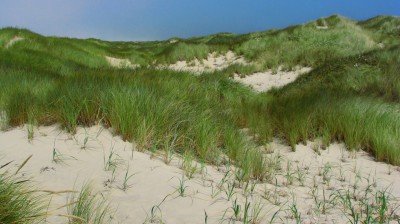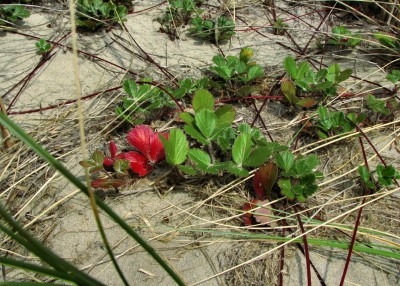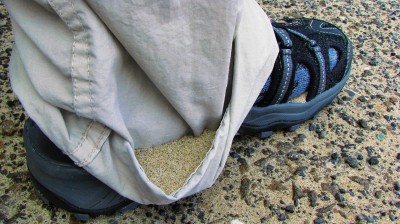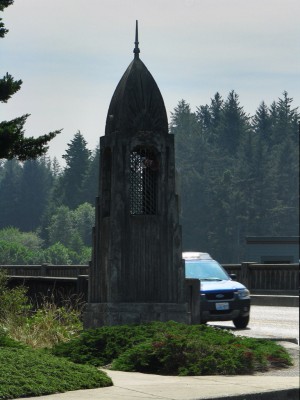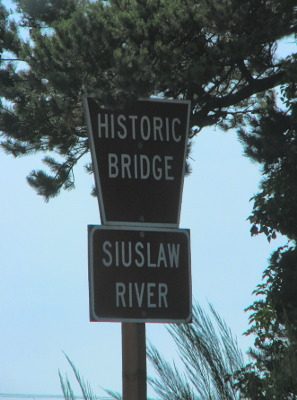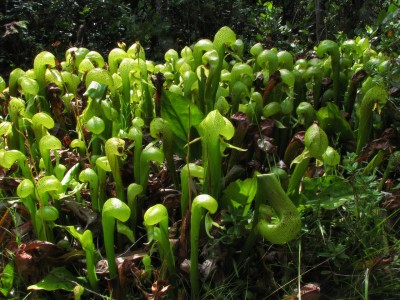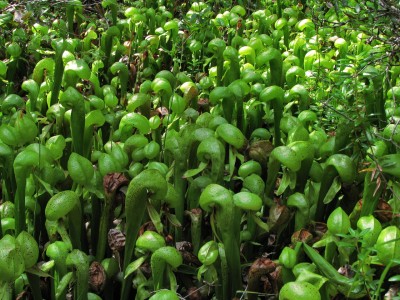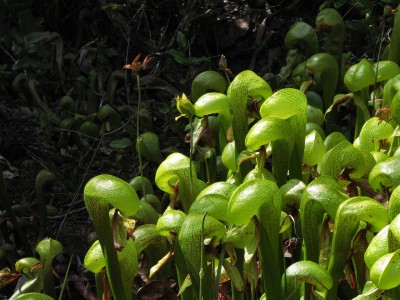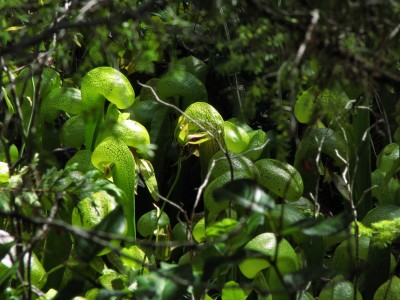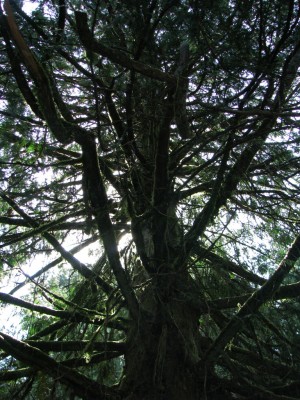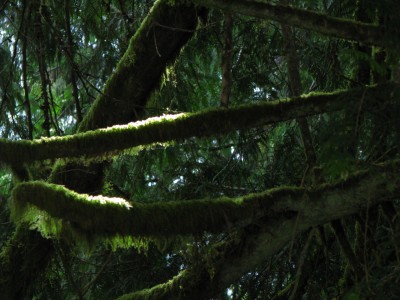Florence, Oregon (continued)
Our plans for our full day in Florence was to explore to the south. We'd see what's north the next day, when we'd be traveling the coast to Lincoln City. Our first objective was to explore the dunes. This is the "largest expanse of coastal sand dunes in North America." We began at the Siuslaw River South Jetty.
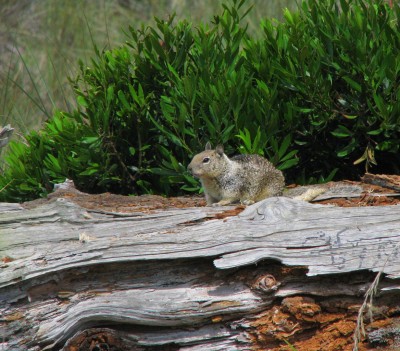
The wind was blowing pretty well, and it was chilly. The coast stays chilly, while inland gets more of a normal summer temperature. This year, inland had been unusually hot, but was ok when we arrived. Which was nice, because we were on this trip to get away from the heat.
We were prepared for it to be chilly, but not as windy as it was. We stayed in the vehicle for a few minutes, and this little ground squirrel came out on a log, right in front of where we parked. After we got out of the car, we saw him (or another like him) on another side of the parking lot, and he let us get pretty close to take his picture.
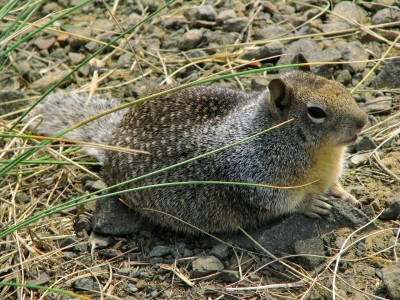
Roy hiked over the dunes to see whether it was worth putting Shelly's feet through it. It is challenging both because it's uneven terrain, and because the sand tends to slide under your feet. In addition to the sand, there were a lot of clumps of grass, a fair amount of scrub, and what look to be wild strawberry plants growing all over the dunes.
Having determined that it was interesting enough, Roy went back and got Shelly, and they slogged along the dune path to the beach. When they arrived, they found another couple on the beach, taking pictures of each other. It's always nice, when you see a situation like that, to offer to take a picture of the couple together. They usually appreciate it. We did that, and they took one of us in return.
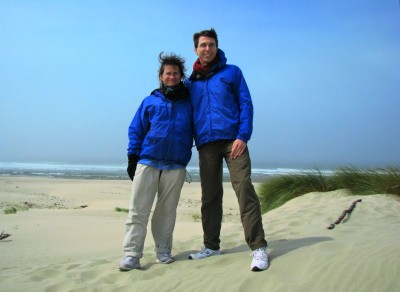
A chilly, windy, deserted beach is not the most interesting place in the world. However, we did find a number of interesting sand formations, apparently the product of wet sand holding together while the dry sand surrounding it blows away.
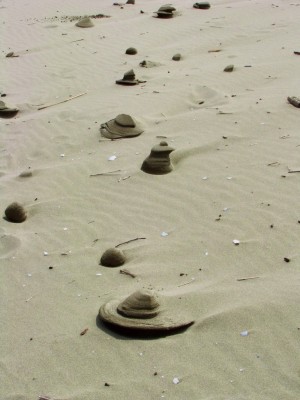
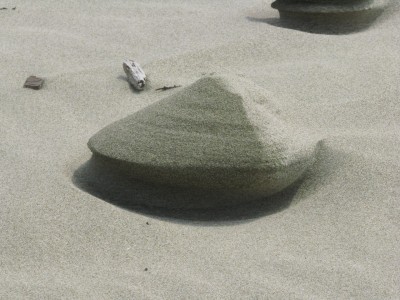
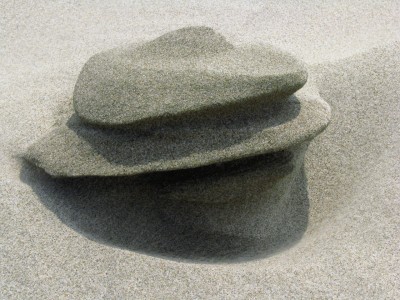
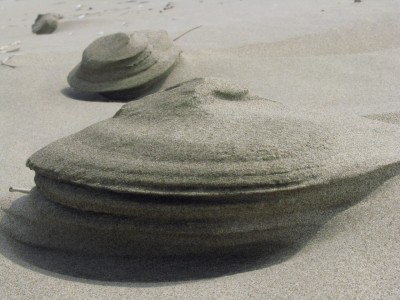
As we worked our way northward along the jetty (there are multiple beach access points — Oregon's beaches are all public by law — we stopped at several, but not all), the dunes got higher. The northernmost dunes are used by recreational off-road vehicles.

Darlingtonia
Darlingtonia is the genus of the cobra lily, a carnivorous plant. It is also the name of a State Natural Site set aside for these plants. It's a very small park, just 18 acres, with a boardwalk over the swampy ground that the plants inhabit. It's not a very long trail — when we came out, Roy was disappointed and insisted on going back and walking it again.
The hoods you see are specially-adapted leaf structures, which lure insects with the nectar contained in the shaft. The bulbous top allows light in, which confuses the insects, who then can't find their way out. Continuing down the shaft, they wind up in the nectar pool, which contains digestive enzymes, and the gatherer becomes the gathered.
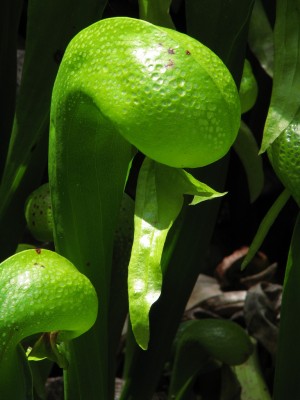
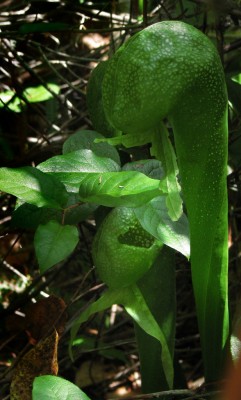
Sometimes, the bugs win. In a few of the plants, there are holes in the hoods, which will allow bugs to go in and out without falling prey to the pool of death.
